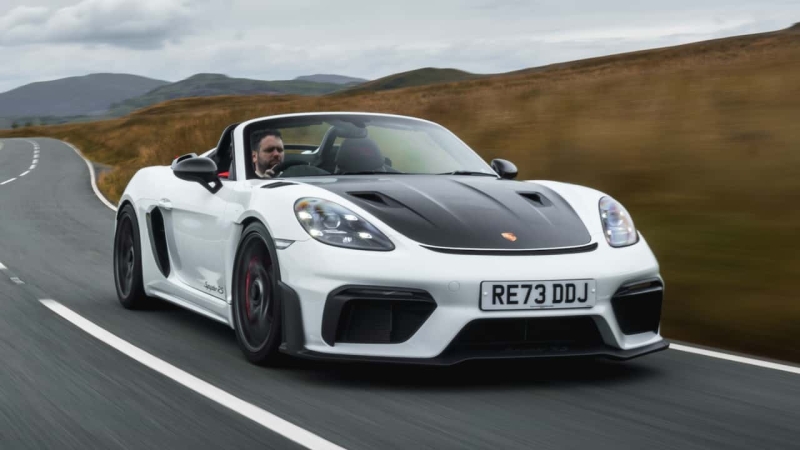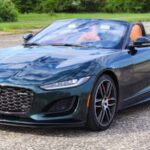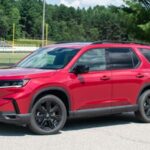The last gas-powered Porsche Boxster is the best. It deserved a trip to some of the best driving roads on earth.
Dean Smith
North Wales is driving paradise. The roads through Snowdonia National Park are, in the truest sense of the word, epic. Tight and twisting as you climb up the mountains, fast and flowing in the valleys, with sublime scenery surrounding the shadow of Mount Snowdon. Park on the side of the road for an hour and you may see three or four cars pass by. One of them might be someone who made the pilgrimage. Mostly it’s just you and the sheep.
Our wooly friends are nonplussed about the car, as they are most things. I’m not. The Porsche 718 Spyder RS is the final salvo for the internal-combustion Boxster, complete with God’s Own Flat-Six—a 4.0-liter, 493-hp, 9,000-rpm engine lifted from the 911 GT3. Pair that with a chassis honed by Porsche’s Motorsport department, but optimized for the road, and you’ve got a car as epic as this place.
And, a bittersweet farewell.
| Quick Specs | 2024 Porsche 718 Spyder RS |
| Engine | 4.0-Liter Flat-Six |
| Output | 493 Horsepower / 331 Pound-Feet |
| Transmission | 7-Speed Dual Clutch |
| 0-60 MPH | 3.2 Seconds |
| Price As Tested | $188,775 (US-spec Equivalent) |
In its current guise, the Porsche 718 Boxster has been with us since 2016, yet its bones date back to the 981-generation Boxster of 2012. Ancient in car terms, but this car still feels great. Porsche got the fundamentals just right. In all its guises, the Boxster has always offered perfect handling balance and a driving experience that’s hardly compromised compared to its tin-top Cayman counterpart. In fact, the Boxster is typically lighter than its Cayman equivalent, and so it is here with the Spyder RS.
The funny thing is that Porsche doesn’t refer to this car as a “Boxster.” It is just, simply, the 718 Spyder RS, and that’s quite apt. Since its very beginning, the Boxster has always offered a blend of daily usability and sports-car fun, but the Spyder RS sacrifices some usability for more flare, more drama, more… more. Erecting the lightweight top is akin to pitching a tent. The top’s fabric offers about as much sound insulation and theft protection; the ride is quite tough at low speed; the gearing is relatively short, so the engine drones at highway speed; the bucket seats are a pain to climb in and out of.
A Boxster GTS 4.0 is a car you can use every day, no problem. The Spyder RS demands more, but it also offers more. It takes the Boxster to new heights.
The suspension that’s tough around town comes alive on a fast road. Snowdonia’s “B-roads” are lumpy and bumpy, heavily crowned to deal with the constant rain, and with weird dips at the inside of corners. And the occasional cattle grade to contend with. Here, the Spyder RS floats along the surface, adaptive dampers rounding off all the hard edges perfectly. Sport-mode suspension settings are often too hard for places like this, but in the Spyder RS, the dampers just keep the body tied down that little bit better, without ever upsetting the car.
Porsche softened the spring rates compared with the Cayman GT4 RS and it pays dividends. On basically every road we threw at the Spyder RS, even the ones beyond Wales, the car ate them up.
Like all Boxsters before it, the Spyder’s handling is perfectly calibrated. It pivots right around its center, with a chassis balance that responds so precisely to throttle inputs. Like the Cayman GT4 RS, the Spyder RS is a very fast car, but one that makes the driver feel immediately at ease. You get in and push hard straight away. The big brakes boost your confidence as well. I can’t remember the last time I drove a Porsche Motorsport car without their optional carbon-ceramics, but these cast-iron brakes stop more than well enough and offer perfect pedal feel.
If anyone is still on the fence about electric power steering, they should drive a Spyder RS. An engineer once told me that you can tell if a car has good steering by the way the wheel just starts to slightly unwind when you run over a wet patch of road mid-corner. It rained off and on throughout our time in Wales, as it’s wont to do, and the Spyder RS communicates every little wet spot on the road up through the wheel. It follows cambers a bit, but it never feels like it’s about to put you off the road.
And yet, it’s all about that engine. Easily the most spectacular ever fit to a Boxster, with the feel of a real race engine. I imagine some of that is a bit contrived, but the uneven idle, buzzes and rattles and vibrations through the firewall give this engine some of the unhinged feel of a thoroughbred. Despite that, it’s perfectly tractable around town. Yet, you have to get on it, because this 4.0-liter has an amazing mid-range and a top end that’s basically unrivaled by anything this side of a Ferrari V-12.
The sound. The sound! As in the GT4 RS, the Spyder RS has intakes just behind the doors which feed a big central airbox and throttle bodies for each cylinder. You can hear the throttle position change as you roll into the pedal. It’s addictive listening to the Welsh air go from a hiss, to a suck, to a deep bellow as you go flat-out. The induction noise is so loud, you don’t even need to turn on the active sport exhaust. It actually sounds best with the top in place, but the rear window removed, the tent trapping and amplifying sound in the cabin. I genuinely dropped my jaw the first time I heard the engine’s song in this way. And while the 8,000-9,000-rpm rush is metallic perfection, this engine sounds special at any speed.
Porsche’s PDK dual-clutch remains the best of its type, so good you can forgive the Spyder RS for its lack of a manual option. (The manual evidently doesn’t fit behind this engine, plus Porsche’s RS cars have long been PDK-only.) Its shorter final drive might be annoying on the highway—I frequently wondered when it would upshift, until seeing the number “7” staring back at me on the gear indicator—yet it allows you to use more of the engine more of the time. Shifts can be as quick as a real racing sequential, yet smooth like a traditional automatic. In normal automatic mode, it’s quick to upshift for fuel economy, so you either need to put it into PDK sport, or better still, shift it manually. Both the paddles and the sequential-esque lever in the center console are fun, and no matter how you use it, you marvel at how relentlessly and efficiently the whole thing works.
The performance envelope is very high here, with all the power you could ever need. There’s immense grip from the Michelin Pilot Sport Cup 2 tires and a chassis that just won’t quit. This formula often produces a car that only really feels alive at extralegal speeds, yet the Spyder RS feels amazing at any pace. You can feel the balance without pushing the limits, revel in the superb feel of the steering and brakes, and enjoy the tack-sharp throttle response even if you don’t use all 9,000 revs.
And it can’t be overstated how nice it is that this car is set up for the road. Photographer Dean Smith, who’s been up and down these Welsh B-roads in hundreds of cars, remarked at how fluidly the Spyder RS glides along without needing crazy speed. A lot of Porsche Motorsport’s recent efforts have erred a little too much on the side of track focus, losing some of the usability and appeal of the division’s cars of years gone by. This doesn’t. I’m sure this Porsche would be hilarious fun on a track, but the Spyder RS belongs out here in the wild. Among the sheep.
Get the best news, reviews, columns, and more delivered straight to your inbox, daily. Sign up For more information, read our
Privacy Policy and Terms of Use.
2024 Porsche 718 Spyder RS
Engine 4.0-Liter Flat-Six
Output 493 Horsepower / 331 Pound-Feet
Transmission Seven-Speed Dual-Clutch
Drive Type Rear-Wheel Drive
Speed 0-60 MPH 3.2 Seconds
Maximum speed 191 Miles Per Hour
Weight 3,214 Pounds
Efficiency 14 MPG City / 19 Highway / 16 Combined
Seating Capacity 2
Cargo Volume 8.6 Cubic Feet
Base Price $167,495
As-Tested Price $188,775
On Sale Now



